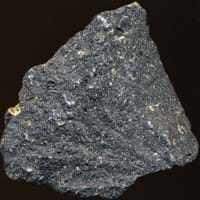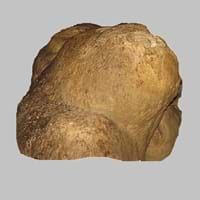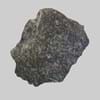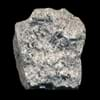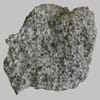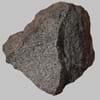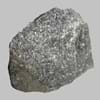Definition
Basalt is a common extrusive igneous rock formed by the rapid cooling of basaltic lava exposed at or very near the surface of Earth
Travertine is a mineral consisting of layered calcium carbonate formed by deposition from spring waters
Discoverer
Georgius Agricola
Marcus Vitruvius Pollio
Etymology
From Late Latin Basaltes (variant of basanites ), very hard stone, which was imported from Ancient Greek Basanites
From Italian travertino a kind of building stone, from Tiburs, adjective from Tibur (Tivoli), in Italy
Class
Igneous Rocks
Sedimentary Rocks
Sub-Class
Durable Rock, Medium Hardness Rock
Durable Rock, Medium Hardness Rock
Group
Volcanic
Not Applicable
Other Categories
Fine Grained Rock, Opaque Rock
Fine Grained Rock, Opaque Rock
Texture
Glassy, Massive, Porphyritic, Scoriaceous, Vesicular
Banded
Color
Black, Brown, Light to Dark Grey
Beige, Black, Blue, Brown, Grey, Red, White, Yellow
Durability
Durable
Durable
Scratch Resistant
Yes
Yes
Appearance
Dull and Soft
Fibrous
Interior Uses
Floor Tiles, Homes, Hotels, Kitchens
Decorative Aggregates, Entryways, Flooring, Homes, Interior Decoration
Exterior Uses
As Building Stone, Paving Stone, Garden Decoration, Office Buildings
As Building Stone, As Facing Stone, Paving Stone, Garden Decoration, Office Buildings
Other Architectural Uses
Curbing, Whetstones
Curbing
Construction Industry
Arrowheads, As Dimension Stone, Cobblestones, Cutting Tool, Rail Track Ballast, Roadstone
As Dimension Stone, Building houses or walls, Cement Manufacture, Construction Aggregate, for Road Aggregate, Raw material for the manufacture of mortar
Medical Industry
Not Yet Used
Not Yet Used
Antiquity Uses
Artifacts, Monuments
Artifacts, Jewellery, Monuments, Sculpture, Small Figurines
Commercial Uses
An Oil and Gas Reservoir, Commemorative Tablets, Creating Artwork, Used in aquariums
Cemetery Markers, Creating Artwork, Gemstone, Jewelry, Paper Industry, Pottery
Types
Alkaline Basalt, Boninite, High Alumina Basalt, Mid Ocean Ridge Basalt (MORB), Tholeiitic Basalt, Basaltic trachyandesite, Mugearite and Shoshonite
Not Available
Features
Has High structural resistance against erosion and climate, Very fine grained rock
Stalactites and stalagmites are formed from this rock, Surfaces are often shiny, Very fine grained rock
Archaeological Significance
Famous Monuments
Easter Island in the Polynesian Triangle, Pacific Ocean, Gateway of India in Mumbai, India, Gol Gumbaz in Karnataka, India
Colosseum in Rome, Italy, Sacré Coeur in Paris, France, Trevi Fountain in Rome, Italy
Famous Sculptures
Data Not Available
Data Not Available
Formation
Basalt forms when lava reaches the Earth's surface near an active volcano. The temperature of lava is between 1100 to 1250° C when it gets to the surface.
Travertine is a type of sedimentary rock formed when a river carries or transports pieces of broken rock which then undergo sedimentation. They are then subjected to high temperature and pressure hence forming travertine rock.
Mineral Content
Olivine, Plagioclase, Pyroxene
Calcite, Clay, Feldspar, Micas, Quartz
Compound Content
Aluminium Oxide, CaO, Iron(III) Oxide, FeO, Potassium Oxide, MgO, MnO, Sodium Oxide, Phosphorus Pentoxide, Silicon Dioxide, Titanium Dioxide
Ca, NaCl, CaO, Oxygen
Types of Metamorphism
Contact Metamorphism
Not Applicable
Types of Weathering
Biological Weathering
Biological Weathering, Chemical Weathering, Mechanical Weathering
Types of Erosion
Not Available
Chemical Erosion, Coastal Erosion, Glacier Erosion
Grain Size
Fine Grained
Fine Grained
Fracture
Conchoidal
Splintery
Streak
White to Grey
White
Porosity
Less Porous
Highly Porous
Luster
Not Available
Dull to Pearly
Cleavage
Not Available
Non-Existent
Specific Gravity
2.8-3
1.68
Transparency
Opaque
Opaque
Density
2.9-3.1 g/cm3
2.71 g/cm3
Resistance
Heat Resistant, Pressure Resistant, Wear Resistant
Impact Resistant, Pressure Resistant, Wear Resistant
Deposits in Eastern Continents
Asia
India, Russia
China, Russia
Africa
South Africa
Not Yet Found
Europe
Iceland
Austria, Italy, Portugal, United Kingdom
Others
Not Yet Found
Not Yet Found
Deposits in Western Continents
North America
Canada, USA
Canada, USA
South America
Brazil
Argentina, Bolivia, Ecuador
Deposits in Oceania Continent
Australia
Not Yet Found
Not Yet Found
All about Basalt and Travertine Properties
Know all about Basalt and Travertine properties here. All properties of rocks are important as they define the type of rock and its application. Basalt belongs to Igneous Rocks while Travertine belongs to Sedimentary Rocks.Texture of Basalt is Glassy, Massive, Porphyritic, Scoriaceous, Vesicular whereas that of Travertine is Banded. Basalt appears Dull and Soft and Travertine appears Fibrous. The luster of Basalt is not available while that of Travertine is dull to pearly. Basalt is available in black, brown, light to dark grey colors whereas Travertine is available in beige, black, blue, brown, grey, red, white, yellow colors. The commercial uses of Basalt are an oil and gas reservoir, commemorative tablets, creating artwork, used in aquariums and that of Travertine are cemetery markers, creating artwork, gemstone, jewelry, paper industry, pottery.
